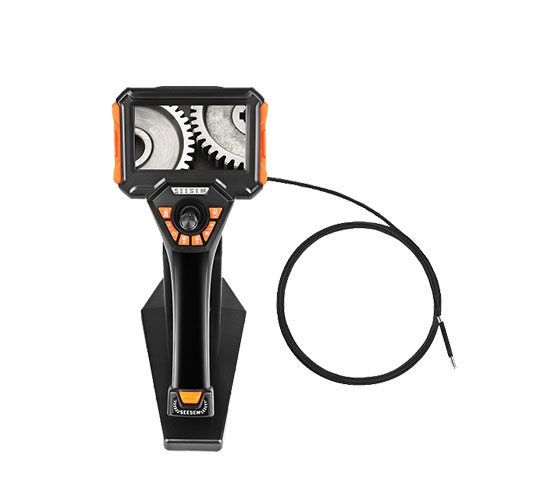The Practicality of Video Borescope for Inspection Applications
Introduction: Video borescope, also known as a videoscope, is a versatile inspection tool widely used in various industries for visual inspection of hard-to-reach or inaccessible areas. This article discusses the practicality and usefulness of video borescope in different applications, highlighting its key features and benefits.
- Versatile Inspection Capability: Video borescopes are designed to navigate through narrow spaces and complex structures, enabling inspection of internal components, machinery, pipelines, engines, and other inaccessible areas. With flexible insertion probes and high-resolution imaging, they provide real-time visual feedback, allowing inspectors to identify defects, anomalies, or signs of wear without the need for disassembly or costly downtime.
- Enhanced Visual Clarity: Modern video borescopes offer high-definition imaging capabilities, capturing clear and detailed visuals of the inspected area. Some models include adjustable LED lighting to illuminate dark or poorly lit environments, ensuring optimal visibility during inspections. This enhanced visual clarity enables inspectors to identify even minute defects, cracks, corrosion, or foreign objects accurately.
- Remote Viewing and Documentation: One of the significant advantages of video borescopes is their ability to capture images and record videos during inspections. This feature is particularly valuable for documentation, quality control, and sharing findings with colleagues or clients. Remote viewing capabilities, such as wireless connectivity or built-in screens, allow multiple stakeholders to observe the inspection in real-time, facilitating collaboration and decision-making.
- Time and Cost Efficiency: Video borescopes significantly reduce inspection time and costs compared to traditional inspection methods. By eliminating the need for extensive disassembly or equipment dismantling, they minimize downtime and operational disruptions. Additionally, video documentation eliminates the need for repetitive inspections, enabling more efficient analysis and problem-solving.
- Safety and Non-Destructive Testing: Video borescopes contribute to enhanced safety and non-destructive testing practices. Inspectors can assess potentially hazardous or confined spaces remotely, reducing the risk of accidents or injuries. By minimizing the need for invasive procedures, video borescopes preserve the integrity of the inspected components and structures, avoiding unnecessary damage.
Conclusion: Video borescopes offer immense practicality and versatility in various inspection applications. Their ability to access and visualize inaccessible areas, provide clear imaging, facilitate remote viewing, and enhance time and cost efficiency make them indispensable tools in industries such as aerospace, automotive, manufacturing, and maintenance. By enabling non-destructive testing and enhancing safety protocols, video borescopes contribute to improved quality control and streamlined inspection processes. As technology advances, video borescopes will continue to evolve, offering even more advanced features and further expanding their range of applications.


